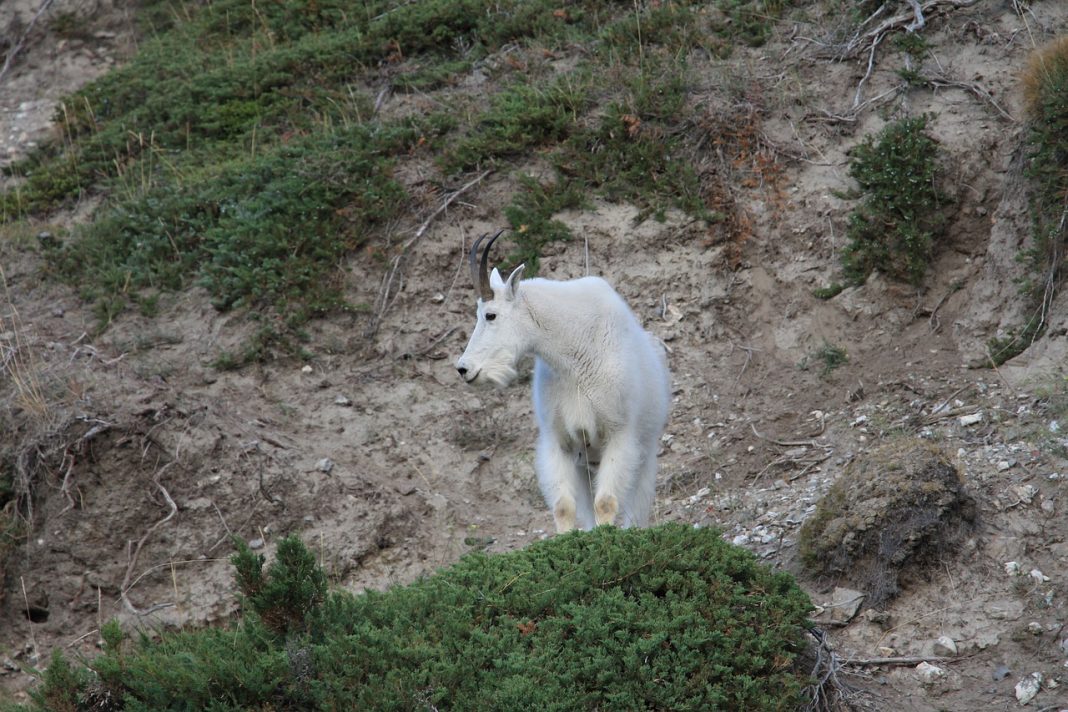MOUNTAIN GOAT SHARPSHOOTERS NEEDED in Washington. With the cluster that was the goat removal in Grand Teton National Park, park officials from the OLYMPIC NATIONAL PARK have gone a different route. Last summer we posted an article about the relocation plan from the park officials. Their plan was to relocate the goats to the northern Cascade Mountains.
Mountain goat capture by helicopter and relocation to native habitat on U.S. Forest Service land in the North Cascades began in the late summer of 2018 with the hope of rounding up about half of the park’s estimated mountain goat population of 725. Since September 2018, more than 300 mountain goats have been captured and 275 relocated, according to Happe. An additional two-week live capture and translocation period is planned to round up an additional amount of animals between July 27 and Aug. 9. –Patti Happe, Olympic National Park wildlife branch chief.
After the capture has concluded the park plans to remove the rest of the non-native mountain goats via sharpshooters. You may apply but you need a group of 3 to 6 people that are not only avid backcountry hunters but they prefer those that have a background in the specific areas these animals are located. Park officials are making it clear this is not a hunt, rather a culling.
WHY THE PROJECT
Happe said the move to relocate the mountain goats was made due to two primary factors.
“The goats are a non-native species and were introduced by a sportsman’s club in the 1920s,” Happe said. “They have an impact on the park’s natural ecosystem and there is a National Park Service-wide mandate to return parks to a more natural ecosystem.”
“The Olympics also are a minerally-deficient range lacking the salts goats search for to survive.”
The mountain goats have adapted to the lack of salt by actually sticking closer to the trails where hikers urinate. This behavior has caused problems in the past. In 2010, Robert Boardman was gored to death by a Mountain Goat along the trails in the park.
"Mountain goats follow and approach hikers because they are attracted to the salt from their sweat, urine, and food….
Posted by ehuntr.com on Friday, June 28, 2019
WHEN: Per the Peninsula Daily News:
Volunteer groups will be assigned to one of three removal sessions: Sept. 9-19, Sept. 22-Oct. 2 and Oct. 5-16. Each session starts with a mandatory training day, followed by up to 10 days in the field. Applications are open through Friday and the opportunity will close as soon as 30 qualified groups apply, or on April 24, whichever comes first. It’s expected that 18 groups will be selected in total — six groups for each of the three planned hunts.
For more info on the project visit the park page or email Happe at patti_happe@nps.gov
What do you think of this project?















